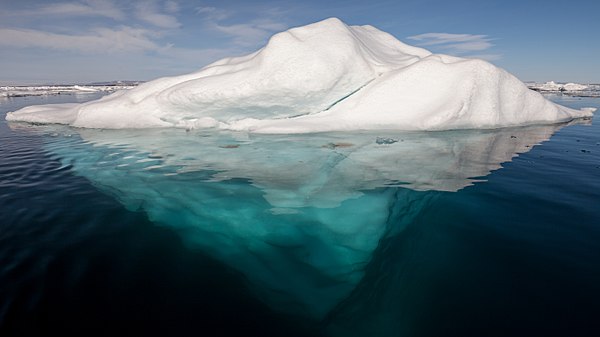
On the surface, Ernest Heminway’s iconic 1927 story, “Hills Like White Elephants,” is about a man and a woman having a conversation and drinking together while waiting for a train.
Lurking beneath the surface, however, is the question between the two over whether the woman will have an abortion. The words “pregnant” and “abortion” are missing.
The warm wind blew the bead curtain against the table.
“The beer’s nice and cool,” the man said.
“It’s lovely,” the girl said.
“It’s really an awfully simple operation, Jig,” the man said. “It’s not really an operation at all.”
The girl looked at the ground the table legs rested on.
“I know you wouldn’t mind it, Jig. It’s really not anything. It’s just to let the air in.”
The girl did not say anything.
“I’ll go with you and I’ll stay with you all the time. They just let the air in and then it’s all perfectly natural.”
Then what will we do afterward?”
“We’ll be fine afterward. Just like we were before.”
At work here is his theory of omission, or more colloquially, “the iceberg theory of writing.”
It’s found in chapter sixteen of Hemingway’s nonfiction book about bullfighting, “Death in the Afternoon,” when he segues into reflections about the writing process.
“A good writer should know as near everything as possible,” Hemingway writes. That knowledge, he qualifies, should not necessarily show up in the story.
\\
“If a writer of prose knows enough about what he is writing about he may omit things that he knows and the reader, if the writer is writing truly enough, will have a feeling of those things as strongly as though the writer had stated them. The dignity of movement of an iceberg is due to only one-eighth of it being above water. A writer who emits things because he does not know them only makes hollow places in his writing.”
When the lookouts were on the Titanic on April 14, 1912, what they feared was not the jagged tops of ice that broke the surface of the North Atlantic but the mountain beneath.
The same principle holds in writing. What makes a story powerful is all the work —the process approach to writing — that lies beneath. It isn’t wasted effort, as many of us fear, but instead constitutes the essential ingredient that gives writing its greatest strengths. We write most effectively from an overabundance of material.
“Read before you write”
In “Reporter,” the 2018 memoir by Seymour Hersh, the famed investigative reporter, would spend “hours in libraries or newspaper morgues, (the home of newspaper clippings in the days before the Internet) finding everything he could in the way of background,” Don Nelson writes in a review of the book for Nieman Storyboard. For journalists and fiction writers, the “core lesson” is “read before you write.”
Donald M. Murray kept a large trash can by his desk when he was freelancing for Reader’s Digest, The Saturday Evening Post and other so-called “slick” magazines of the 1960s. He noticed that when the trash can overflowed with discarded material, the stories were better. They were worse if he found himself diving in to find something — anything — to fill space.
David Finkel filled up lots of notebooks when he was a staff writer for The Washington Post Magazine.
“I tend to write down everything I see, even if it’s something like, ‘2 rocks off to left- sedimentary??-resemble poodle.’ My hope is that as the reporting process continues, the significance of my notations will emerge. Usually, that doesn’t happen. Out of a 50-page notebook, I’ll have five pages of possibly usable quotes, ten pages of other possibly usable notes, and 35 pages of hieroglyphics.”
G
Finkel was an experienced feature writer, and later, a prize-winning author. He had more freedom than a reporter covering a meeting, say, or a speech, who has to file a story within an hour. (Finkel, who later went on to win a MacArthur “genius” fellowship, is also overly modest; many reporters who admire his stories and books would be happy to find in their notes what he considers “hieroglyphics.”)
When Wall Street Journal reporter Alix Freedman found her notebooks filled to bursting, she remembered an editor’s description of journalism’s essential challenge: “Distill a beer keg’s worth of information into a perfume bottle.”
As a Pulitzer Prize-winning investigative reporter, Freedman was accustomed to amassing a vast amount of material, more than enough to support her findings. She could spend months on a story, easily filling that metaphorical beer keg. Notwithstanding, the Journal’s news hole, the amount of column space available for the day’s edition, had its limits, even for front page blockbusters.
Freedman came up with a method to meet the challenge. On a sheet of paper, she listed all the facts, quotes, statistics, scenes, examples and themes she’d uncovered in her reporting. She gave each one a letter grade, like a schoolteacher marking up tests.
Only the A’s made it into her story.
Her aim, she said, was to “maximize impact,” to use “not just an example but a telling example. Not just a quote but a quote on point.”
Writers aren’t always sure what information will prove to be important, so they tend to fill their notebooks or drafts with an overabundance of material. Much of it never will appear in the final story.
The power of a story comes from what’s not in it.
May the writing go well.

“